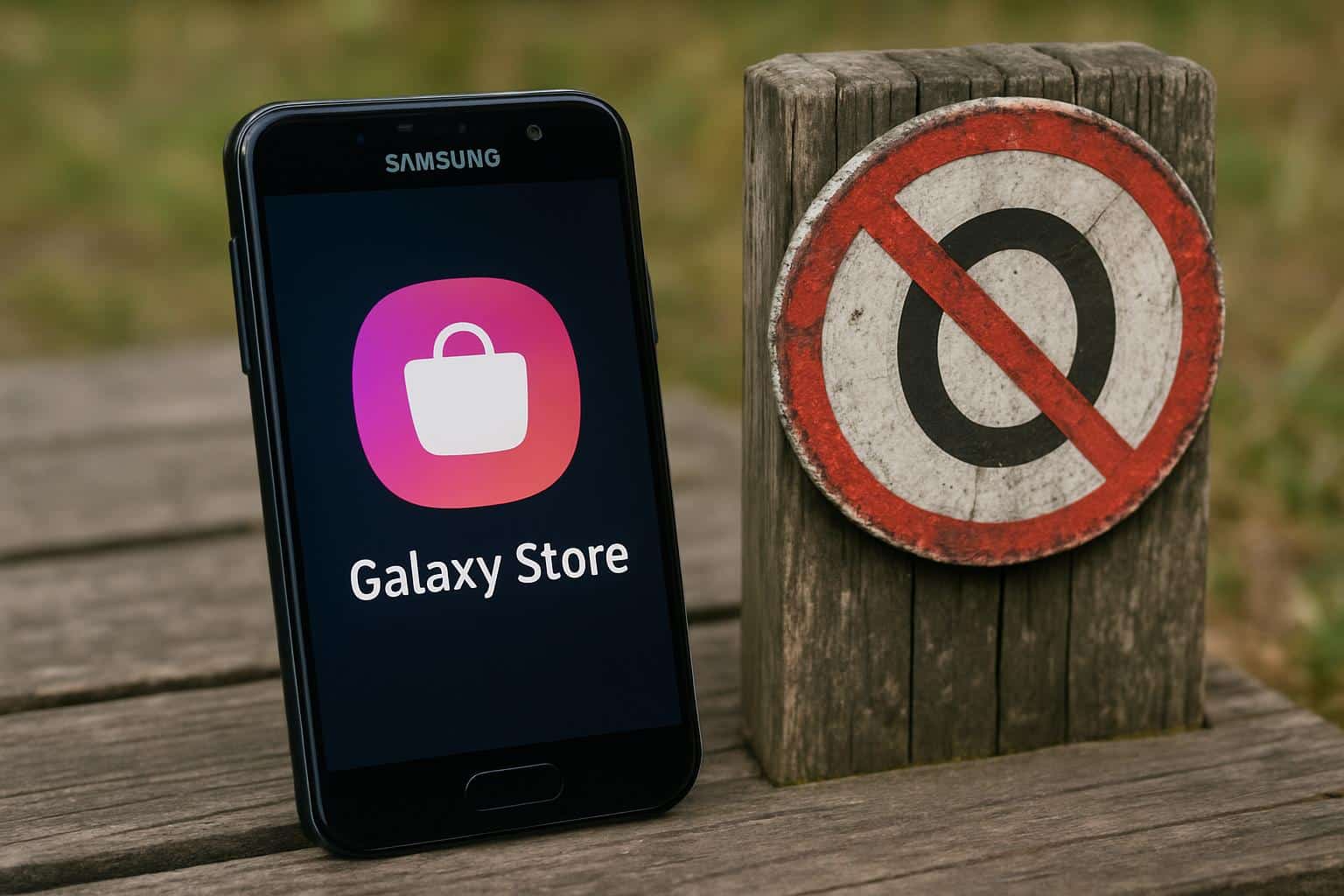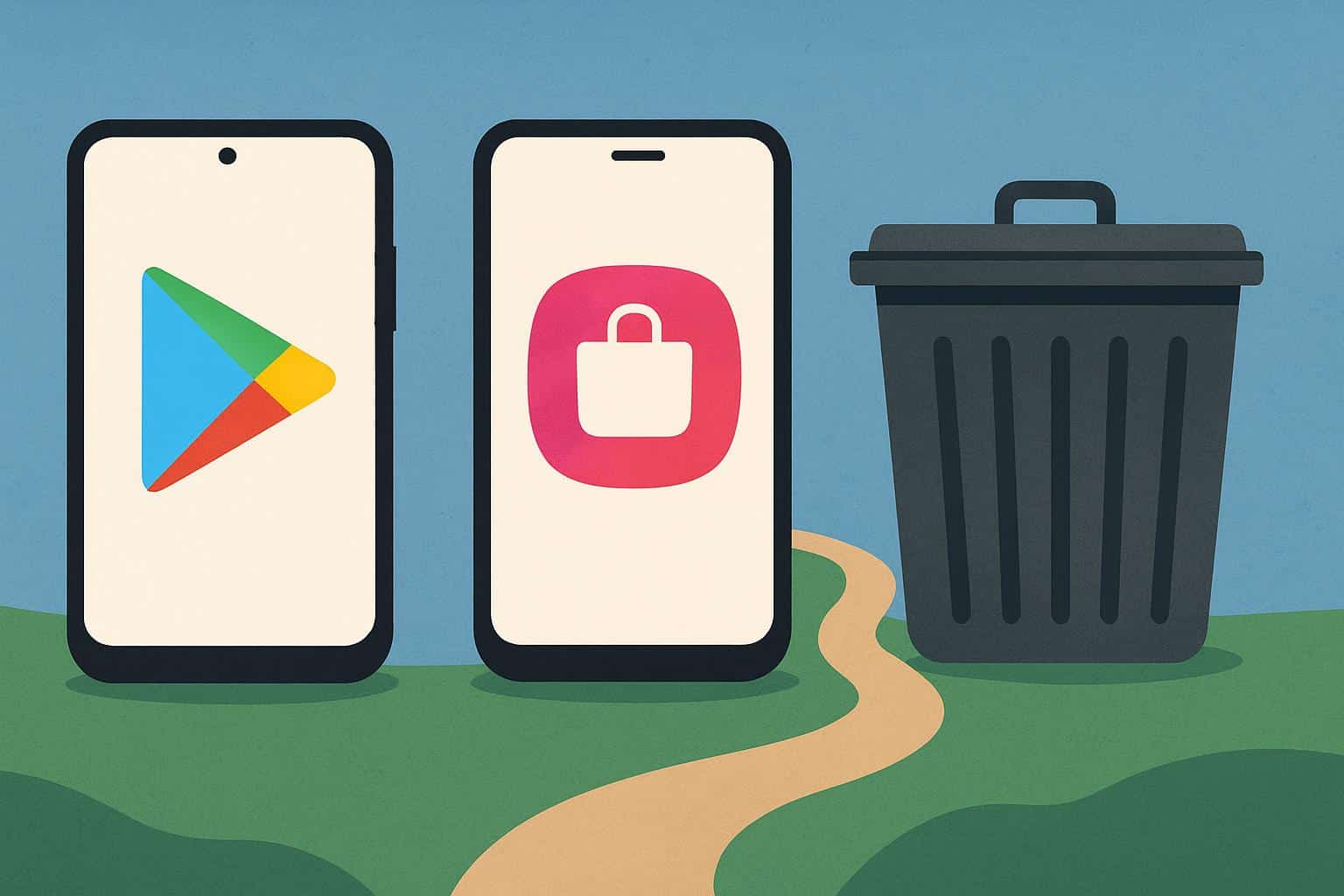Samsung makes great hardware and its take on Android has long been mature, but the company’s side app marketplace has become a liability. The Galaxy Store seems increasingly redundant next to Google Play, it creates some friction around updating, and its homepage is very much a place for suggesting entirely trust-eroding promotions. With customers craving simplicity and regulators deeming less gatekeeping advantageous, the smartest play now is to wind down the Galaxy Store altogether in favor of a Play-first approach.
Duplicate app stores on Galaxy phones hurt users
It runs two stores on a single phone, which is bound to be confusing. Lots of Galaxy owners regularly encounter duplicate listings and update prompts that won’t finish because an app was installed from another source. Inevitably, the result is a maze of “update available” messages that don’t lead anywhere, or worse yet, delayed patches for apps we actually care about.

At the other end, Play has been the de facto main store for most Android users; Statista numbers put that catalog at more than three million titles. Several Samsung apps are already there, such as Samsung Notes, Clock, and Galaxy Wearable. Maintaining some first‑party tools on Play and others within the walled garden of the Galaxy Store means users have to juggle two updaters, two types of notifications, two security postures. It’s fussy clutter on devices that otherwise have so much polish.
Aggressive ads and irrelevant promotions erode trust
Most people didn’t expect the app store to be ad‑free, but full‑screen promos and pop‑ups on launch are an aggressive tendency that spoils the fun.
Splitting off to do a store visit for updating a keyboard, system module, or the like and being faced with a splash ad for some random gacha game is exactly the kind of misdirection. Apple and Google monetize their stores as well, but they generally reserve promotions in search results and those chosen placements — not blocking the path to your updates.
Worse than annoying, interruptive promotions can ruin trust. App stores stand guard over the update pipeline. The more they look like ad billboards, the less users feel they are in a secure, efficient environment designed for maintenance rather than for marketing.
Samsung’s theming era has passed for most users
Galaxy Themes and font packs also had a heyday back in the day. Today, Android’s Material You and One UI’s own customizations account for most users’ needs. You don’t have to, since Google Play and reputable dev shops offer plenty of icon packs, wallpapers, and color systems you can download directly without hesitation — One UI organizes them all on the system level.
On the wearables side, Samsung’s tactical move from Tizen to Wear OS brought all apps and watch faces under Play as well. That’s because the company is sunsetting legacy Tizen distribution routes while pushing any new Galaxy Watch apps through Play, which means one of the original anchor use cases for that marketplace has effectively melted away.

One Distribution Path Benefits Developers
Chasing multiple binaries, billing plans, and support channels for two stores is a PITA. One set of release tracks, crash analytics, and entitlement logic rather than many. For users, this means faster patches and fewer conflicts. For Samsung, it cuts down on QA overhead and allows the company to devote engineering talent to One UI features and the performance of devices rather than store maintenance.
Regulatory winds also favor simplification. The European Commission’s Digital Markets Act has forced platforms to move toward clearer, fairer distribution deals. The Epic Games antitrust case in the United States made clear how store rules and fees can warp ecosystems. While alternative stores are already permitted on Android, a Samsung-led cleanup — phasing out one redundant store — would signal intent as being user-first, not platform sprawl.
A practical exit strategy for winding down the store
The first is simple: Take all of the Samsung-built apps and modules that users do update — system utilities, camera add‑ons, Good Lock components, companion tools for devices — and put them on Google Play with proper attribution. Where device‑level app requirements are needed, use Play’s managed updates and Play App Signing to keep code integrity.
Secondly, make Galaxy Themes into a curated channel that’s delivered through Play‑distributed plugins, or bake the best creators into One UI’s native theming catalog. This allows for personalization to thrive without a dedicated store. For regions where Play is unsupported, have a lightweight, region‑specific distribution path with exactly the same versioning and policies to prevent fragmentation, limited to only the essential aspects.
Finally, ship a migration tool that recognizes individual Galaxy Store installs, maps each app to its Play equivalent, and seamlessly hands off updates going forward. Let people know about the change through system notifications and a help page that makes mention of migration plans and any related privacy considerations. Done properly, most users would notice only fewer update prompts.
The payoff for users and Samsung if Galaxy Store ends
Users have one place for updates, fewer pop‑ups, and better security signals with Play Protect’s new app‑approval rules. Developers gain a cleaner release pipeline. Samsung has a more streamlined software set, less support hassle, and PR street cred for getting rid of bloat that no longer pulls its weight.
Samsung has already demonstrated it can deliver best‑in‑class Android experiences. Discontinuing the Galaxy Store isn’t a retreat — it’s an evolution. Put everything that matters where users already live, and let One UI, not a second app store, be why people love their Galaxy phones.

